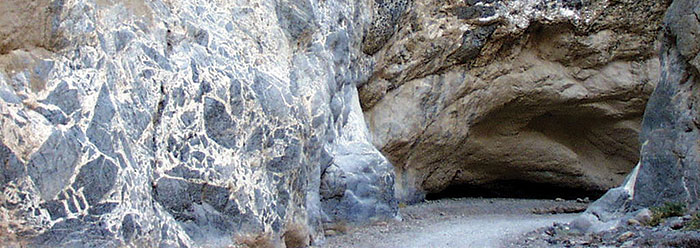Sometimes sedimentary deposits contain large cobbles or boulders known as clasts, which were somehow transported to their present locations. Moving water is required to transport sand grains, and the larger the granule the more force is needed (i.e., hydraulic force). But what do we make of very large clasts found in the geologic record? Some individual clasts have areas measured in square miles! How did they get there?
There are several known mechanisms to move large rocks, some intuitive and some rather surprising, but all require at least a local catastrophe.1 The first is by turbidity currents, known primarily from one historical example. In 1929, the underwater continental slope off Grand Banks, Newfoundland, became unstable and slid downhill over an incline of less than three degrees. The saturated sediment avalanched at initial speeds of over 60 miles per hour. Clasts of various sizes were suspended in the turbulent flow and prevented from settling until the water slowed. We know the speed of the slide because numerous telephone cables crossed the Atlantic in those days, and as each cable broke due to the force, the time was recorded. Before the slide was over it extended out 430 miles and deposited a relatively thin sedimentary bed, two to three feet thick, over 40,000 square miles of ocean floor. No one knew exactly what had happened because it was an underwater event—out of sight.
Decades later, submarines and underwater cameras ventured to the slide site and geologists plotted the size and character of the deposit. They labeled this new type of deposit a turbidite, one formed by turbulent waters. Much to their surprise, the new, nearly instantaneously formed turbidite had exactly the same features as many known deposits in the Appalachian Mountains that had been interpreted as products of slow and gradual deposition. Eventually, the new concept forced a reinterpretation of up to 30 percent of the sedimentary deposits presently found on the continents as ancient underwater turbidites, and more are being reinterpreted all the time.
Turbidites primarily consist of fine-grain mud and sand, but very large clasts are found in some turbidite deposits. If large boulders are movable with the local catastrophes of today, what would be the cause of much larger boulders found in the geologic record?
Several possible mechanisms for moving granular materials have been recognized, including debris flows and landslides in which massively large boulders have been moved. Such events may occur today, whereby the resulting deposits are local in scale, with the moved material derived from a local source. What then do we make of rock units consisting of huge boulders and slabs from faraway sources that were transported over very gradual slopes? Clearly, these boulders hadn’t simply tumbled off a nearby cliff face but arrived by way of a different process.
Megabreccias are defined as sedimentary deposits containing conspicuous angular fragments of rock in excess of one meter in diameter. They can be produced not only by turbidites but also by debris flows and gravity slumps. Sometimes whole geographic areas are covered by these large “unmovable boulders.” Cornelius Van Wingerden and Roger Sigler, both graduates in geology from the ICR Graduate School, conducted an investigation of strata in the Mojave Desert of California.2 Enormous deposits of megabreccias, boulder breccias, diamictites, pudding-stones, and associated slide blocks and gravity flows of Upper Proterozoic strata have been studied there.
These monumental deposits are usually assigned by creationists to the initial bursts of the great Flood. Waves of unimaginable size and force were produced when the “fountains of the great deep” broke open.3 Our planet’s past has been catastrophic, indeed. Only when we consider the great Flood of Noah’s day as the cause does this evidence make sense.
References
- Chadwick, A.V. 1978. Megabreccias: Evidence for Catastrophism. Origins. 5 (1): 39-46.
- Sigler, R. and V. Wingerden. 1998. Submarine Flow and Slide Deposits in the Kingston Peak Formation, Kingston Range, Mojave Desert, California: Evidence for Catastrophic Initiation of Noah’s Flood. In Proceedings of the Fourth International Conference on Creationism. Walsh, R. E., ed. Pittsburgh, PA: Creation Science Fellowship.
- Austin, S. A. and K. P. Wise. 1994. The Pre-Flood/Flood Boundary: As Defined in Grand Canyon, Arizona and Eastern Mojave Desert, California. In Proceedings of the Third International Conference on Creationism. Walsh, R. E., ed. Pittsburgh, PA: Creation Science Fellowship, 37-47.
Image: Titus Canyon, Death Valley. Credit: National Park Service.
* Dr. Morris is President of the Institute for Creation Research and received his Ph.D. in geology from the University of Oklahoma.





